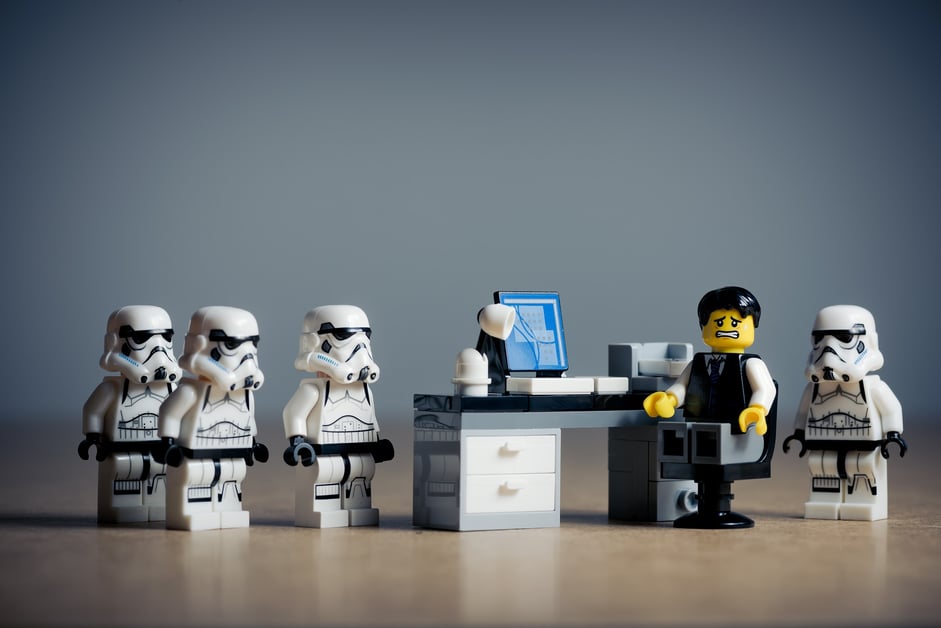Deliver the HR Service Experience your employees deserve - Part 1

I recently had the pleasure of working on a Smart Guide: Deliver the HR Service Experience your employees deserve with Samantha Eaton. Sam has over 25 years’ experience in transforming service delivery within the public sector. In the Smart Guide, Sam outlines a proven approach, which has helped public sector organizations to reshape their services, improve HR administration processes, reduce costs, and support digital transformation agendas.
We’ve divided the Smart guide into nine blog posts, and we’ll be releasing two blogs per week. If you’d rather not wait, you can Download the Smart Guide now
Happy employees lead to happy customers
In the age of hypercompetitive markets and an explosion of new technologies, customer experience (CX) is king and brands that fail to recognize this will lose out to the competition. At the same time, business leaders recognize the correlation between customer experience and employee experience (EX). Organizations rely on their employees to deliver positive customer experiences, and as numerous studies have shown, happy employees lead to happy customers.
In his (rather long-titled) book - The Employee Experience Advantage: How to Win the War for Talent by Giving Employees the Workspaces they Want, the Tools they Need, and a Culture They Can Celebrate – author Jacob Morgan creates a bulletproof case that explains why employee experience is the next massive area of investment for organizations that want to stay ahead of the competition. The book provides insights and metrics gained from interviewing 150 executives, reviewing 150 studies and articles, and analyzing over 250 global organizations. It explains that companies who invest in their employee experience, on average, generate four times more profit and over double the revenue of those that don’t.
HR must up its game
As executives increasingly acknowledge that profits and productivity are driven by engaged employees, they are demanding more from HR professionals. They insist that HR, like their colleagues in other business units, to use metrics to baseline and continually improve HR services. They expect HR to demonstrate that they are delivering value and providing a solid return on the business’s greatest investment…its people.
Manual processes, poor communication and lack of transparency have created an image problem for overworked HR teams. Employees often perceive HR staff as gatekeepers; the policy police of the executive arm, who do more to support management than employees. HR teams must up their game by completely overhauling working practices and systems to deliver the level of insight and analysis required to improve HR service delivery.
>Mind the (technology) gap
Modern technology has revolutionized the consumer service experience. Anything we want to buy, read, watch or eat is available at a click 24/7. Yet in the workplace, employees must rely upon 20th century technologies, manual processes and the disjointed practices of departmental silos to get the support they need to get work done. As consumer technologies raced ahead and the workplace fell further behind, IT departments were first to feel the effects of ‘shadow IT’ – a term used to describe the practice of people bringing their own technology into the workplace to boost their productivity. Concerned about security and protection of corporate data, IT groups initially pushed back, but most have accepted, or even embraced the practice. 20th century technology is being displaced by the need for productivity and ‘digital transformation’ has become the latest buzzword, as businesses clamor to modernize enterprise infrastructure and deliver improved service experiences to both customers and employees.
HR must build the workplace of the future
In simple terms, employees of all ages want a workplace experience that provides the same levels of convenience, flexibility and mobility that they have become used to in their personal lives and HR needs to deliver. To stay relevant in the era of digital transformation, HR must focus on building the workplace of the future. Yet when HR teams spend most of their time answering emails, responding to repeat questions and manually processing forms, there simply isn’t enough time for innovation and improvement. Tracking HR service requests via email or spreadsheets doesn’t provide adequate insight into the number of inquiries that are coming in, the types of requests submitted by employees, or the levels of team performance and efficiency. HR Service Management tackles these challenges head on.
In the next blog post in this series, I’ll explain what HR Service Management is about, and how HR teams can use it, to create a set of organizational capabilities that deliver value to employees in the form of services. If you’d rather not wait, Download the Smart Guide now to help your organization - Deliver the HR Service Experience your employees deserve.


